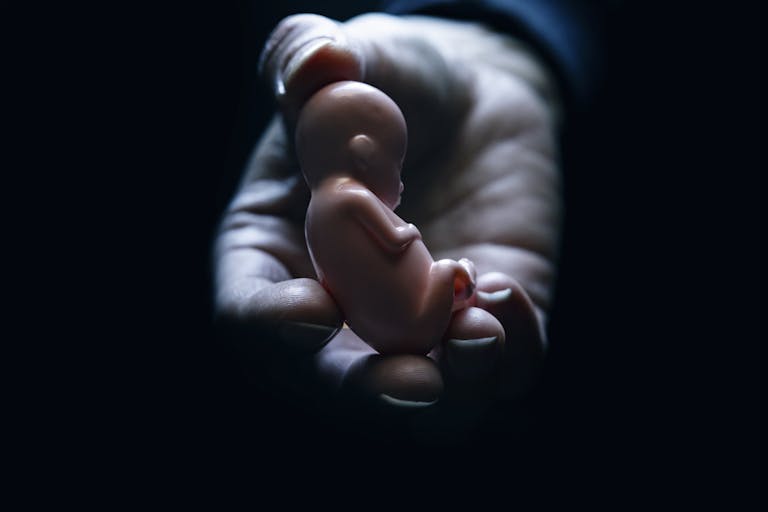
Is picking the 'best' embryo a mere parenting tool, or eugenics fueled by hubris?
Nancy Flanders
·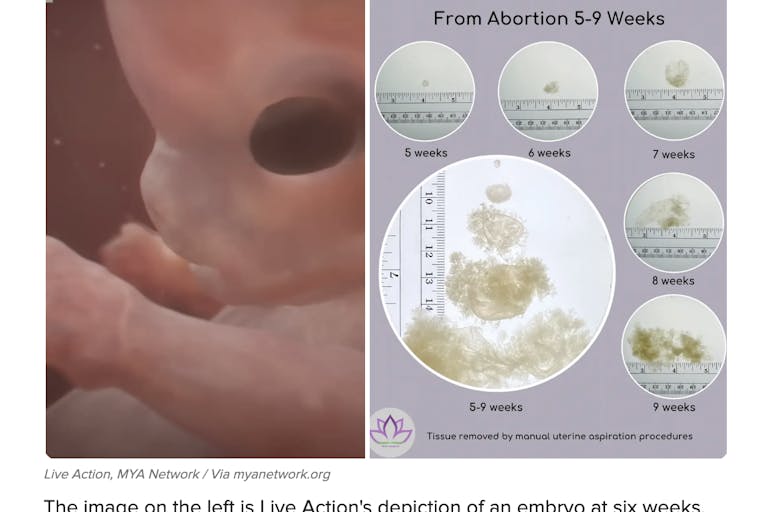
BuzzFeed’s attempt to discredit ‘Baby Olivia’ prenatal development video is the weakest yet
BuzzFeed attempted to invalidate Live Action’s “Meet Baby Olivia” video this week, claiming that there are six misleading or inaccurate statements made in the video about prenatal development. But the outlet’s arguments fall far short of debunking anything in the expert-endorsed animation.
Live Action’s video depicts life in the womb using ground-breaking animation and expertise from medical doctors as well as from the Endowment for Human Development (EHD), a self-described “nonprofit organization dedicated to improving health science education and public health” that is “committed to neutrality regarding all controversial bioethical issues.” EHD’s own award-winning prenatal development DVD — featuring the same milestones and timelines for prenatal development — is distributed by National Geographic.
Let’s take these alleged “misleading” claims one by one:
1. The moment when life begins
BuzzFeed claims that when life actually begins is “subjective,” and therefore, Live Action’s statement that life begins at fertilization is deemed by BuzzFeed to be “inaccurate.” BuzzFeed staff writer Natasha Jokic writes, “Many people do not agree that life begins at conception, even within religions. For example, the Talmud [a primary source of Jewish religious law] states that life begins at birth in Judaism.” But Jokic is wrong in two ways.
First, it doesn’t matter what people “believe” about when life begins — it is scientifically proven that a new, living human organism comes into being at fertilization. Scientific journals, textbooks, and professionals are in agreement that the moment when a new, distinct human being begins to exist is the moment of fertilization when sperm and egg unite. The Human Embryology & Teratology textbook states:
Although life is a continuous process, fertilization is a critical landmark because, under ordinary circumstances, a new, genetically distinct human organism is thereby formed. … The combination of 23 chromosomes present in each pronucleus results in 46 chromosomes in the zygote. Thus the diploid number is restored and the embryonic genome is formed. The embryo now exists as a genetic unity.
Second, while Jokic claims that Judaism states life doesn’t begin until birth, Jewish experts say otherwise. Rabbi Yaakov Menken explained, “The Jewish Bible’s position on life is unambiguous — and emphatically ‘pro-life.’” He added, “One who claims that fetal life is not precious to Judaism must not have read the Torah or Prophets, or studied our Oral Law.”
In addition, Cecily Routman, MSW, president of the Jewish Pro-Life Foundation, has said, “Judaism is the original pro-life religion. It was the first religion in human history to sanctify human life from conception to natural death and to prohibit child sacrifice.” She continued, “The Jewish case against abortion comes directly from the Jewish bible, which commands us to protect innocent life wherever and whenever possible.”
2. Age of the embryo
BuzzFeed also claims that Live Action’s “Meet Baby Olivia” video is “misleading” regarding “how old the embryo is.” Jokic writes, “This video marks the embryo’s growth from conception which is not how pregnancy is typically measured. Instead, it is usually tracked from the last known period. This is important to note because many of the markers used in this video are presented around two weeks earlier than they would be in medical terms.”
But here’s the thing: “how old the embryo is” is exactly what is shown in the video, which follows the child from the moment of fertilization onward. This is different from how the pregnancy would be measured, which is an estimate from the date of a woman’s last menstrual period (LMP). Dating the child’s age from fertilization is more precise than dating the embryo’s age from LMP when discussing prenatal development, because the date of a woman’s LMP occurs an estimated two weeks prior to fertilization — before the new life even exists.
The Mayo Clinic notes on its website (emphasis added), “It might seem strange, but you’re not actually pregnant the first week or two of the time allotted to your pregnancy. Yes, you read that correctly! Conception typically occurs about two weeks after your last period begins. To calculate your estimated due date, your health care provider will count ahead 40 weeks from the start of your last period. This means your period is counted as part of your pregnancy — even though you weren’t pregnant at the time.”
The Endowment for Human Development also shows photos and videos of prenatal development based on weeks from fertilization, and it notes this on its website — just as “Baby Olivia” also makes clear. In fact, even EHD’s prenatal DVD distributed by National Geographic “explains the science and communicates the wonder of human development from fertilization through birth” (emphasis added).
There is no inaccuracy regarding the age of the embryo when one is attempting to document the development of a new human organism from its biological beginning: fertilization.
3. The embryonic heartbeat
Live Action notes in the “Baby Olivia” video, “At three weeks and one day, just 22 days after fertilization, Olivia’s heartbeat can be detected.” BuzzFeed claims this, too, is “inaccurate,” writing, “At this time of gestation (in medical terms, around five or six weeks), the cells that can one day become a heart begin to emit electrical activity. This cannot be detected on a sonogram until some weeks later.”
Jokic then quotes abortionist Jennifer Kerns. “What we’re really detecting is a grouping of cells that are initiating some electrical activity. In no way is this detecting a functional cardiovascular system or a functional heart,” Kerns told NPR in 2022. This is an inaccurate and calculated statement aimed at convincing women that there is no “heartbeat” because the embryo’s heart does not look like an adult heart. But that doesn’t mean it isn’t functioning.
In fact, the human heart is the first organ to develop and the first to reach a functional state. Peter J. Ward, Professor of Anatomy, explained, “The heart, to do its job, has to be able to pump, and it starts pumping fairly early on — about day 23 of development. … At this point, we’ve got a nice flow of blood already set up through the heart.” (emphasis added)
Likewise, Dr. Mobeen Syed explained, “[The] heart is the very first organ that starts developing and it is the first organ that reaches a functional state. Can you imagine that the heart reaches a functional state even before its own development completes? When the heart is in the form of a tube, even then it is pulsating and it is beating and it is pumping blood.” (emphasis added)
And the cardiac activity (a.k.a “heartbeat”) of a preborn child can be detected by ultrasound at approximately four weeks after fertilization (which is six weeks gestation). Instead of falsely claiming that this cannot be detected “until some weeks later,” perhaps BuzzFeed should have checked YouTube to see videos of women sharing their six-week gestational ultrasounds, where the “heartbeat” of a two-chambered heart pumping blood through the embryo’s body can be heard.
Take a look at this in-utero video footage from the Endowment for Human Development showing the beating heart pumping blood (in two chambers) at four weeks and four days after fertilization:

Article continues below
Dear Reader,
In 2026, Live Action is heading straight where the battle is fiercest: college campuses.
We have a bold initiative to establish 100 Live Action campus chapters within the next year, and your partnership will make it a success!
Your support today will help train and equip young leaders, bring Live Action’s educational content into academic environments, host on-campus events and debates, and empower students to challenge the pro-abortion status quo with truth and compassion.
Invest in pro-life grassroots outreach and cultural formation with your DOUBLED year-end gift!
Perhaps if BuzzFeed is truly interested in the facts and science of human development, it should consult doctors who don’t deliberately end developing human lives. And the fact that six-week gestational ultrasound footage is freely available on YouTube is yet another example of just how poorly “researched” the BuzzFeed article is in general.
4. What an embryo looks like
Warning: Some images below may be disturbing to readers.
BuzzFeed also claims that Live Action’s groundbreaking animation of an embryo is misleading. In an attempt to undermine “Baby Olivia,” BuzzFeed uses images supplied by MYA Network (an organization with the goal of “normalizing abortion care”), which are labeled “Tissue removed by manual uterine aspiration procedures” — and while the images may be of “tissue,” they are not images of an embryo.
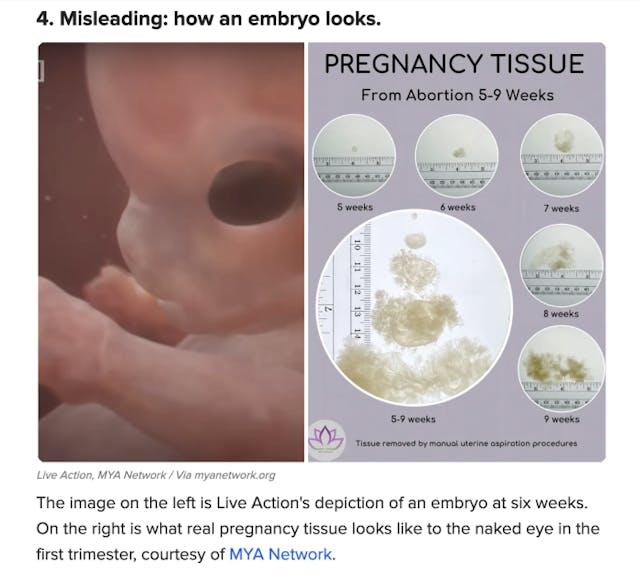
In fact, The Guardian came under fire from both pro-lifers and pro-choicers in 2022 for publishing the same images from MYA Network. The images even appear to contradict embryonic images published by abortion groups like Planned Parenthood, the National Abortion Federation (NAF), and the American College of Obstetrics and Gynecologists (ACOG). And it’s odd that BuzzFeed would claim that cells have electrical activity at 22 days post-fertilization but then claim the preborn child is nothing but tissue at seven weeks post-fertilization — four weeks after the supposedly simple electrical activity began.
“The images … are clearly intentionally misleading. They state that they are pictures of gestational sacs, ignoring the inconvenient fact that in pregnancy, the gestational sac surrounds the embryonic or fetal human being — which have clearly been removed before these photos were taken,” explained Dr. Christina Francis, a board-certified OB/GYN and board member of the American Association of Pro-Life OB/GYNs.
Here is a screenshot from EHD’s in-utero video footage at six weeks and six days — which looks incredibly similar to “Baby Olivia” in her sixth week of life:
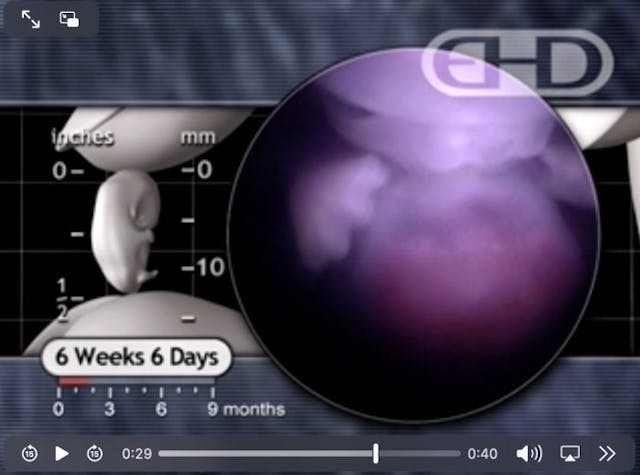
And here is video footage from just a week later, at seven weeks after fertilization:

And here are the recognizable body parts of a child killed by a suction aspiration abortion in the first trimester of pregnancy. Here, we see no gestational sacs — we see human remains.

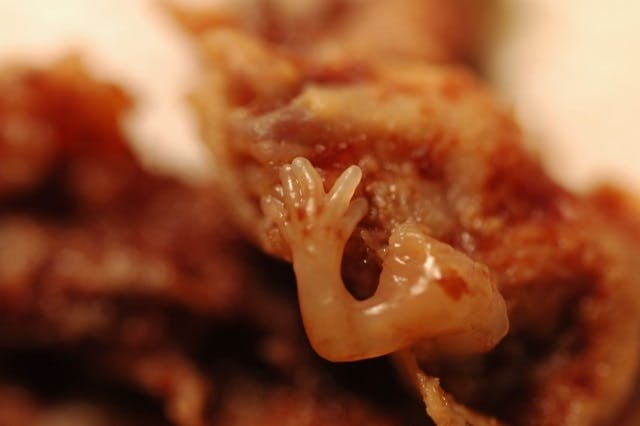
Yes, body parts may be recognizable, even after a first trimester abortion, as at least one of the undercover videos released by the Center for Medical Progress (CMP) beginning in 2015 showed. Body parts must be examined after an abortion to ensure the abortion was complete. Abortion workers must account for two arms, two legs, a head, a rib cage, a spine… and so on.
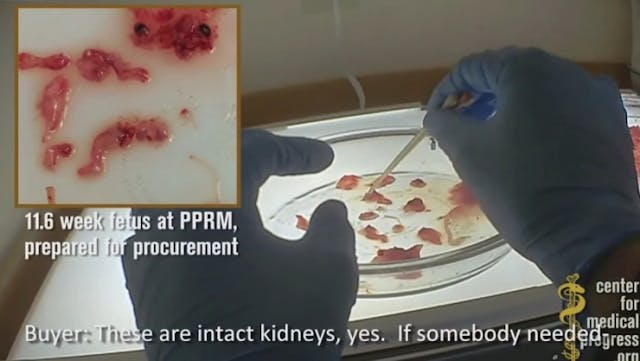
Click here to see similar images from a 2009 National Abortion Federation presentation about first trimester abortion created for a NAF event, which shows much more than white, fluffy gestational sacs. There are clearly recognizable human body parts in the first trimester.
5. Voluntary movements of the preborn child
BuzzFeed goes on to call Live Action’s depiction of a child “playing in the womb, moving her body, and exploring her environment” at 11 weeks after fertilization “inaccurate.”
Yet BuzzFeed then quotes the International Journal of Environmental Research and Public Health, which states that “first involuntary fetal movement begins around 7 gestational weeks; independent voluntary movement, such as kicking, commences at 12 weeks as the neuromuscular unit continues to grow.”
But 12 gestational weeks is the equivalent of 10 weeks post-fertilization — a full week earlier than the dating that Live Action uses in “Baby Olivia.” In other words, in this case, BuzzFeed unintentionally verified what “Olivia” pointed out. Whoops!
The Cleveland Clinic also states that by 12 weeks LMP (10 weeks post-fertilization), the preborn chid is moving. Parents magazine even says preborn babies can be seen moving on the ultrasound as early as six to eight weeks.
6. Speaking movements
The last developmental milestone that BuzzFeed calls “misleading” in the “Baby Olivia” video is the statement that “[b]eginning at 18 weeks, ultrasounds show speaking movements in her voice box.”
“Dr. Liji Thomas puts the development of vocal chords closer to 28 weeks,” wrote Jokic. “The use of ‘speaking’ is subjective, as babies only begin regularly babbling around six months after being born.”
However, the Live Action video does not claim that Baby Olivia is actually “speaking,” but that ultrasounds can show “speaking movements in her voice box.” According to EHD, beginning at 18 weeks, “ultrasound scans show a distinct type of motion in the fetal voice box, or larynx… similar to movements made during speaking.” (emphasis added)
BuzzFeed’s attack on Baby Olivia is simply the latest (and arguably the weakest) pro-abortion media attempt to discredit the medically accurate animated video depicting life inside the womb and accurate, expert-supported prenatal milestones. As “Baby Olivia” and similar videos continue to be added to public school curricula, more baseless attacks are to be expected from those who know that the truth about human life reveals the injustice of abortion.
Live Action News is pro-life news and commentary from a pro-life perspective.
Contact editor@liveaction.org for questions, corrections, or if you are seeking permission to reprint any Live Action News content.
Guest Articles: To submit a guest article to Live Action News, email editor@liveaction.org with an attached Word document of 800-1000 words. Please also attach any photos relevant to your submission if applicable. If your submission is accepted for publication, you will be notified within three weeks. Guest articles are not compensated (see our Open License Agreement). Thank you for your interest in Live Action News!

Nancy Flanders
·
Analysis
Nancy Flanders
·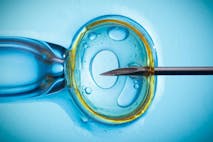
International
Angeline Tan
·
Pop Culture
Cassy Cooke
·
International
Cassy Cooke
·
Analysis
Cassy Cooke
·
Analysis
Nancy Flanders
·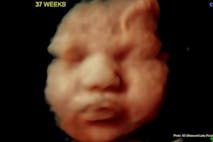
Politics
Nancy Flanders
·
Activism
Nancy Flanders
·
Issues
Nancy Flanders
·
Human Interest
Nancy Flanders
·